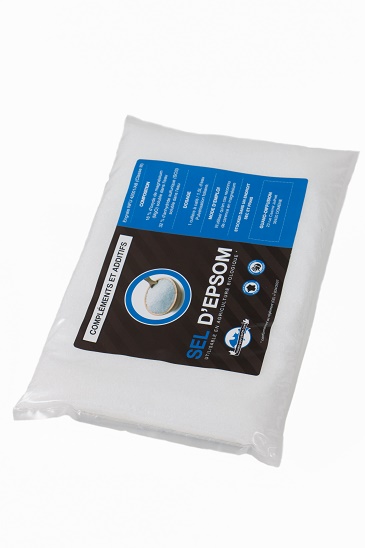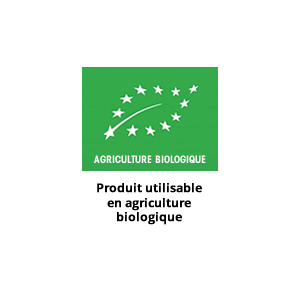- GUANO DIFFUSION - Top-range organic powder fertilizers
- 04 76 52 09 93
- contact@guano-diffusion.com
Shop
Epsom salt
€8.50 – €66.90 TTC
Epsom salt – fertilizer with magnesium and sulphur – Guano Diffusion : fast action fertilizer to prevent or cure magnesium deficiencies.
Epsom salt
Epsom salt is a fast-acting fertilizer rich in magnesium and sulphur.
Epsom slat is very easy to use, and has been used for centuries to treat different sorts of affections. It is also some kind of a common “old-wives’ cure” for gardeners, particularly when it comes to treating plants that are deficient in magnesium.
When to use Epsom salt ?
Epsom salt is useful to prevent deficiencies as well as in certain specific cases :
- when the flowering phase is long (>10 weeks)
- if you grow your plants in geotextile pots
- if you water your plants with hard water (7.5<PH<8.0)
Why do plants need magnesium ?
Magnesium enables plants to assimilate phosphorus (P), nitrogen( N) and sulphur (S) present in the soil. It enhances the synthesis of chlorophyll and is therefore very important for photosynthesis. Furthermore, it also strengthens cell walls and supports plants in maintaining both their structure and vitality.
Epsom salt brings sulphur to plants. Combined which magnesium it boosts nutrients assimilation and works as a global preventive remedy. When mixed to the soil, sulphur increases the availability of major nutrients (NPK).
How to identify a deficiency in magnesium?
Magnesium is mobile element. You will identify a deficiency in magnesium by observing the leaves of your plants. They will yellow, starting with the lower leaves. Their veins will remains green though. In some case, the tip of the lower leaves will darken and slightly curl upwards on themselves. Magenium deficiencies lead to a different yellowingthan the one caused by nitrogen deficiencies or red spiders attacks.
Make sure to identify properly what your plants are suffering form/lacking of before adjusting the nutrients you feed them. Otherwise, you might burn them and/or worsen the damages caused by the deficiencies.
How to identify a magnesium deficiency (video)
Some likely causes of magnesium deficiency :
- A soil with pH>7
- Too much fertilizers given to your plants, in particular when it leads to a soil with too much potassium (K) and/or calcium (Ca), which both compete with magnesium.
- Soil-washing due to an excess of fertilizers leads to magnesium deficiency.
- Le rinçage de votre terre de culture suite à un excès d’engrais entraîne une carence en magnésium.
- A continuously wet soil, or an acid soil, or temperatures under 18°C can block the assimilation of magnesium by plants, even if there is some in the soil.
- A mother-plant that has spent too much time in the same pot.
Dosage and dissolution of Epsom salt in water :
Epsom salt can be used dissolved in irrigation water, but plants are a lot more receptive to it if you use it in foliar spray (i.e sprying it on leaves – in such a case, no NOT spray when plants are under the sun or horticultural lamps on).
- To prepare a solution to water your plants with, mix 2 teaspoons of Epsom salt for every 2.5 liters of water. Mix the salt first with a bit of warm water in order to dissolve it. Repeat after a month if needed.
- To prepare a solution to use in foliar spary, dissolve a teaspoon for every 2.5 liters of water and spray on plants at the beginning of each cycle, or when needed. Make sure you mainly spray the back of the leaves. If you have to spray during daytime, do it when the sun sets down, or turn off your lamps until the leaves are dry.
| Weight | kg |
|---|---|
| Poids sel | En sachet : 0,5KG, En sachet : 1KG, En sachet : 3KG, En sachet : 7KG, En sac 25KG |
Only logged in customers who have purchased this product may leave a review.



Reviews
There are no reviews yet.